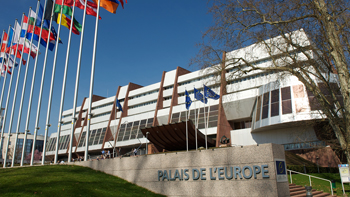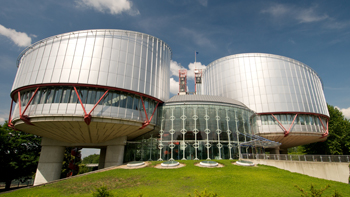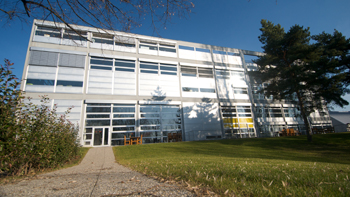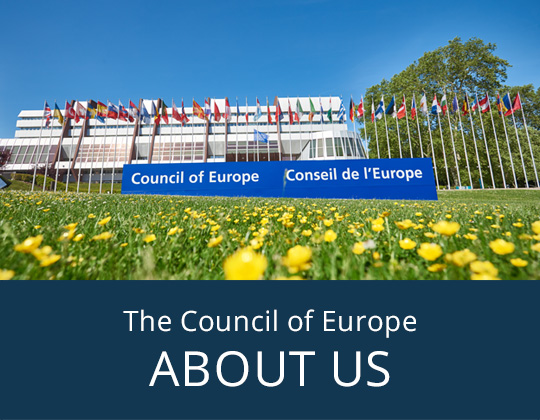Headquarters and offices
The organisation
The Council of Europe has its headquarters in Strasbourg, France. It maintains external and liaison offices to other international organisations. The European Youth Centres in Strasbourg and Budapest offer training for young people in democracy and human rights issues.
Buildings
 The Palais de l'Europe
The Palais de l'Europe

Designed by French architect Henry Bernard and inaugurated in 1977, the Palais de l'Europe is the Council of Europe's principal building. Its entrance is flanked by the flags of all the Council's member states. The outer layer of the Palais is a mosaic of contrasted colours, which are found on the concrete of the buttresses, the aluminium-covered façade and the vast windows of the conference rooms respectively. In front of the Palais the lawn was once the site of the predecessor to the Palais de l'Europe – the Maison de l'Europe.
 The Agora
The Agora

Agora is the Council of Europe's newest building, taking its name from the ancient Greek word for an open place of assembly. It was inaugurated in April 2008 and designed by the architectural firms Art & Build (Brussels) and Denu et Paradon (Strasbourg). It combines modernity, efficiency and respect for the environment. Behind its large glazed facade are two atria, which are enclosed by meeting rooms clad in pre-patinated copper. Covering the structure is an eye-catching cantilevered metal roof, which is topped by two fabric solar chimneys, shaped to allow natural ventilation of the atria.
 The Human Rights Building
The Human Rights Building

Inaugurated in 1995, the Human Rights Building curves alongside the Ill, the river that flows through Strasbourg. It is one of the most striking achievements of the great British architect Lord Richard Rogers, who also designed the Centre Georges-Pompidou, London's Millennium Dome, and the Welsh National Assembly building. The building is steeped in symbolism (the façade evokes the scales of justice) and uses contemporary materials (the liberal use of glass is a metaphor for transparency). The front of the Human Rights Building is formed by the two cylindrical chambers of the European Court of Human Rights.
 The European Directorate for the Quality of Medicines and HealthCare (EDQM)
The European Directorate for the Quality of Medicines and HealthCare (EDQM)

The new building of the EDQM sits to the rear of the Agora. Designed by architects from the Brussels-based firm Art & Build and the Strasbourg-based Denu and Paradon, it was inaugurated in March 2007. The curved glass and wooden structure combines a modern aesthetic with contemporary functionality and houses laboratories, offices and meeting rooms that serve the organisation's expanding role in monitoring the quality of medicines in Europe and further afield.
 The European Youth Centre
The European Youth Centre

Designed by the Norwegian architects Lund and Slaatto, this functional, contemporary building has received tens of thousands of young people from all backgrounds since 1972. It is located in the Wacken neighbourhood. The European Youth Centre, an outstanding example of Scandinavian architecture, blends the rawness of concrete and aluminium to striking effect.

Did you know?
The Council of Europe's 46 member states form a death-penalty-free zone. Since 1985, the abolition of the death penalty has been a requirement for membership of the Council of Europe.
Where are the headquarters of the Council of Europe?




